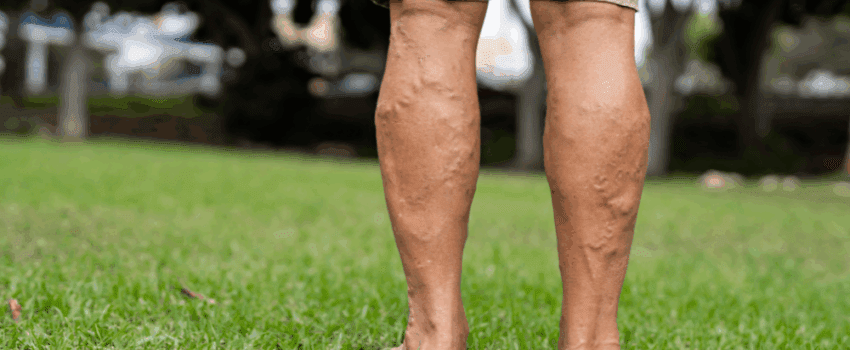What Are Varicose Veins?
Varicose veins are large, swollen veins that twist and bulge just under the surface of the skin, mostly on the legs. They form when the tiny valves in the veins do not close properly, causing blood to collect instead of moving back up toward the heart.
While some people see them as just a cosmetic issue, these veins can lead to more serious problems if left untreated. About 10%–30% of adults suffer from varicose veins, and they are more common in women, especially after pregnancy or with age.
Varicose veins can get worse over time. This blog outlines the different stages of varicose veins and what changes can happen along the way.
Stage 1 – Telangiectasias (Spider Veins)
The first stage of varicose veins is spider veins. These small, thin veins look like webs or tiny branches on the surface of the skin. They are usually red, purple, or blue.
Most people do not feel pain at this point, but some might notice mild itching or burning. Spider veins are usually more of a cosmetic concern, but they can be an early warning sign that deeper vein issues may develop later.
Stage 2 – Visible Varicose Veins
At this stage, varicose veins start to appear more clearly. These veins become thick, twisted, and more noticeable. People may start to feel a heavy or tired sensation in their legs after standing or sitting for a long time. These symptoms can make daily activities feel harder. Getting varicose vein treatment at this stage can help stop the veins from getting worse and reduce discomfort.
Stage 3 – Varicose Veins With Symptoms
In the third stage, the following symptoms become more obvious and uncomfortable:
- Swelling in the legs and ankles
- Cramping
- Aching
- Throbbing feeling
Skin around the veins might feel warm or tender. At this point, varicose vein treatment is important for improving leg health and comfort.
Stage 4 – Edema (Swelling)
Stage 4 brings more serious swellings in the legs. The skin may start to change color and become tight or shiny. Swelling can make the skin more fragile and prone to injury.
Patients can wear compression stockings and keep their legs elevated to help. Still, medical treatment is often needed to stop the problem from getting worse.
Stage 5 – Skin Changes
When the condition reaches this stage, the skin starts to show damage from long-term poor blood flow. It may become discolored, hard, or thin, especially around the ankles. There might be areas where ulcers have healed, leaving scars. Skin care and treatment are recommended to prevent new wounds and help the skin stay as healthy as possible.
Stage 6 – Healed Ulcers
At this stage, there have been open wounds, but they have healed. Even though the skin has closed, it remains weak and is likely to break open again if not managed carefully. Regular check-ups and continued vein care are important to avoid future ulcers.
Stage 7 – Active Venous Ulcers
This is the most serious stage of varicose veins. Open, painful sores develop on the skin, usually around the ankles. These ulcers heal slowly and can easily become infected. They can make it difficult to walk and do normal activities.
Schedule Your Consultation With Dr. Schwartz
Varicose veins can go from a small cosmetic problem to a serious health issue. Treating them early can help patients avoid pain and major complications later. At North Shore Vein Center, we help patients find the right varicose vein treatment before things get worse. If you’ve noticed any changes in your legs, reach out to us and schedule a consultation with Dr. Schwartz to learn more about your options.

